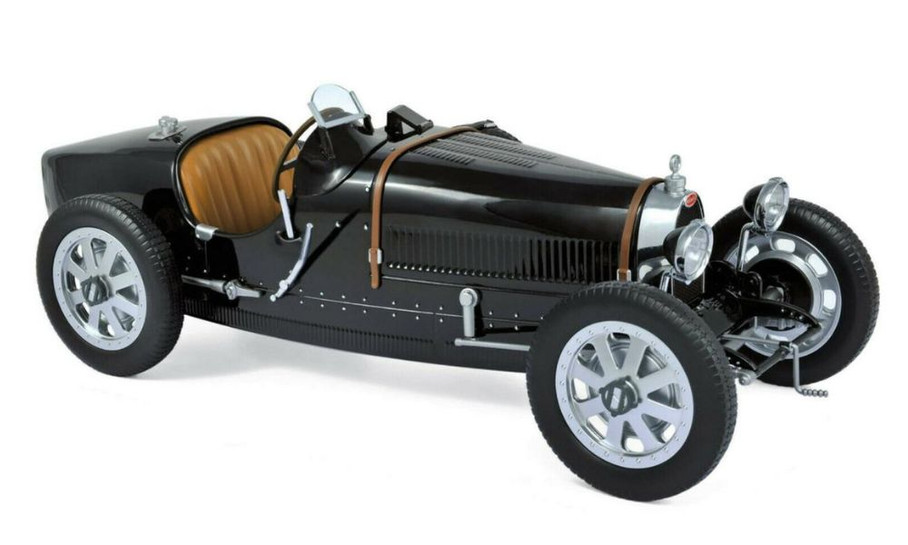Car enthusiasts have a long history of automotive development to inform their purchasing decisions. These vehicles have come a long way, from the first sports cars to modern supercars. Over the past century, manufacturers have iterated upon and improved them for better speed, handling, comfort, and safety.
The evolution of modern sports car design highlights the many changes these vehicles have gone through over the years. It’s good to know the history of the most significant automotive developments and how they’ve impacted today’s models, even if you already plan to purchase one.
What Is a Sports Car?
Knowing how people define sports cars is essential to understand how they evolved. More than just being sleek or fun to drive, sports cars come with a plethora of user options that make driving much easier for owners. However, what constitutes a sports car can be tricky to pin down, especially in the context of automotive history.
The resplendent nature of sports cars makes them an attractive option for consumers. Sports cars generally seat only two people and have a high-powered engine with a sleek body capable of moving at top speeds without losing control. Most manufacturers attempt to outdo the competition with improved steering, braking, and acceleration, making the ride much more enjoyable.
The Origins of Sports Cars
The first sports cars started to appear in the late 19th century as car manufacturers attempted to push their designs to the extreme for the sake of speed. Commonly called “roadsters,” at the time, these vehicles were often much more expensive due to manufacturers using custom parts and additions that set them apart from the competition.
Fiat, Alpha Romero, and other European manufacturers competed to outdo one another and draw more prestigious clients. As time went on, the designs became standardized, and consumers started to see the design and capability features associated with our modern sports cars.
The First Sports Cars
The first actual sports cars didn’t start to hit the market until the early 20th century. Racers often used models such as the Bugatti Type 35 in the Grand Prix, but these cars soon found their way to the streets. Their lightweight frames and high-performance engines made them perfect for those who liked to go fast.
At the time, most could only go up to about 60 MPH, which was considered fast for the period. Automakers were beginning to realize that some buyers preferred to pay more for faster vehicles with more to offer than traditional models. This demand started a race among car manufacturers to push the envelope of their vehicles’ capabilities to deliver a unique experience for their clients.
The Birth of the Muscle Car
As automakers continued to improve and iterate on the idea of the sports car, they started to design more affordable models for everyday use. Companies such as Pontiac, Chevrolet, and Ford created iconic vehicles throughout the 1960s and 70s that people still collect to this day.
The GTO, Impala, and Mustang are some of the most well-known muscle cars in the world. These American-made machines were known for their large engines and low bodies, resulting in greater power and speed for an affordable price. The end of the 1970s saw increased regulations on emissions, which effectively ended the muscle car era.
The Rise of the Supercar
As manufacturers made strides in their vehicles’ efficiency, performance, and handling, a new type of automobile took shape. Supercars are exotic vehicles specially designed to offer the highest speed and performance while still being street-legal.
Supercars are generally more flashy and expensive but offer a unique experience for drivers. Companies such as Lamborghini, Ferrari, and McLaren design limited-run models with specialized features that enthusiasts are willing to pay for. In many cases, these cars are status symbols that maintain the exclusivity of ownership.
The Electronics Revolution
While cars had many electronics, even as early as the 1930s, it wasn’t until after the 1960s that manufacturers began making them with fully-automated windows, starters, and driver assistance systems. Most cars now use such electronics by default, making them much more convenient for owners.
Modern sports cars utilize the latest electronics in their designs to make them more luxurious and proficient. Automakers install engine control units (ECUs) throughout the vehicle’s internal network, improving everything from the brakes to the transmission. Today, some are even starting to become autonomous, allowing drivers to go wherever they want without having to drive themselves.
Modern Designs
Modern sports cars have all the benefits of over a century of development to inform their designs. With sophisticated, high-performance engines, advanced suspension, and computer-generated aerodynamic bodies, these vehicles can go faster than ever before while improving efficiency.
Despite their ubiquity on the market, they’re also more expensive than ever. Collectors with a deep fascination with the history of sports cars may have trouble finding the models they want to buy. Luckily, it’s easy to find Ford, Pontiac, and Chevrolet scale models that depict the unique characteristics that make them so popular.
Future Developments
It looks like sports cars are here to stay. The rarer or hard to find a model, the more people want it for their collections. As manufacturers continue to make improvements and change designs according to consumer demand, the sports car’s power, performance, and handling will continue to advance.
The transition to electric engines is one of the biggest developments occurring right now. With fewer components between the pedal and the wheels, electric engines have much more torque, allowing them to accelerate faster than gas-powered alternatives. Additionally, electric motors don’t require standard transmissions, paving the way for faster, quieter, and less costly designs.
Short-Term Improvements Lead to Long-Term Gains
Automotive manufacturing has made a lot of progress since its inception. It may be difficult to see the drastic changes that have occurred in the sports car market over the past century. However, looking at each iteration highlights just how far we’ve come.
The evolution of modern sports car design demonstrates how small advances in technology and manufacturing can lead to massive changes over time. For those who love the automotive scene, there’s never been a better time to be alive.


